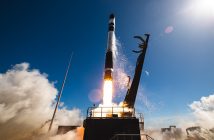
Operating at distances less than ten kilometres from target satellites, Optimus Viper will deliver the kind of detailed, actionable intelligence about critical space infrastructure that, until now, has been impossible to achieve.
“During a time of rapidly evolving threats, space sustainability and security isn’t defined by the size of our systems but by their resilience and adaptability,” said Space Machines CEO Rajat Kulshrestha. “Optimus Viper will revolutionise how we operate in space by delivering distributed and dynamic capabilities at a fraction of traditional costs.”
Space Machines Company is also introducing commercial pricing for proximity inspection at USD2-3 million per inspection in low Earth orbit – a fraction of the current cost. This shift in economics makes advanced space security accessible to both government and commercial operators while supporting the expanding commercial space economy.
Space Machines plans to expand its Australian manufacturing capabilities to produce Optimus Viper Rapid Response Vehicles at speed and scale. The company will manufacture the vehicles at one tenth the current cost for such capability – a significant shift in space economics that makes distributed space security financially viable for the first time. This approach delivers resilience through increased distributed and dynamic capabilities, an expanded space industrial base, and reduced total cost.
“Today’s dynamic space environment demands a new model of allied collaboration,” said Space Machines Company Advisor Lieutenant General Larry James. “Allied-by-design isn’t just a feature, it’s the foundation for effective space operations. By developing capabilities that are inherently interoperable, we multiply our collective effectiveness while sharing costs. This approach transforms how we operate in space, creating the agility and resilience needed to address emerging challenges.”
Space Machine Company’s ambitious deployment schedule includes multiple capability missions throughout 2026, rapidly building operational capability and proving the system’s effectiveness across various orbital regimes. This accelerated timeline reflects the urgent need for resilient space security solutions in an increasingly contested environment where both national security and commercial assets face evolving threats.





